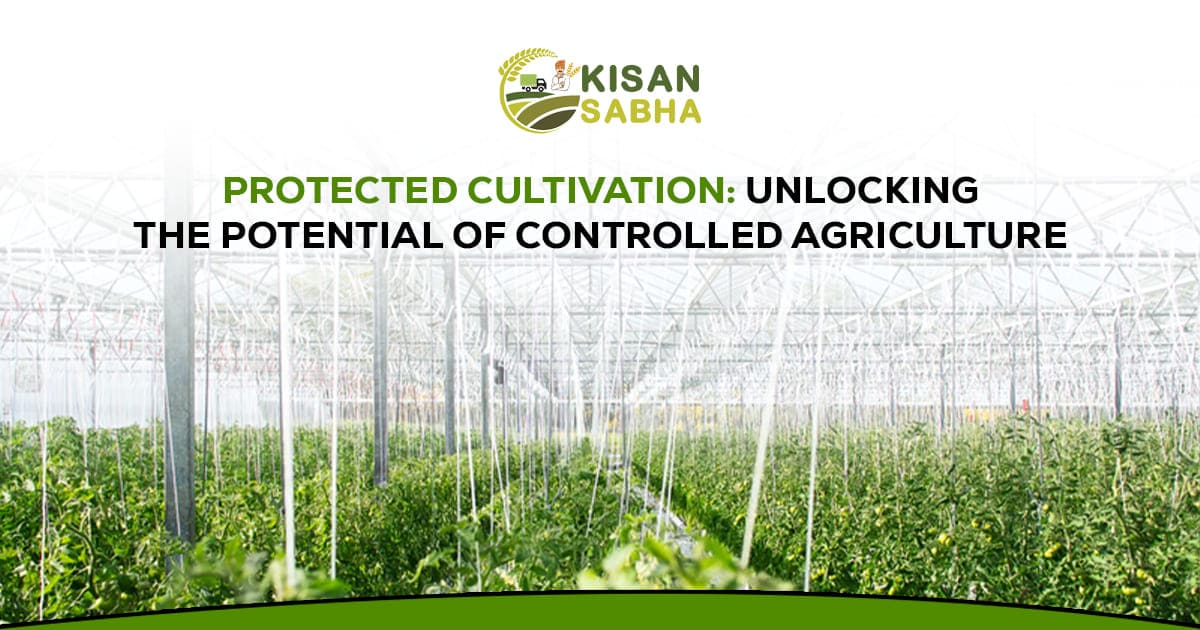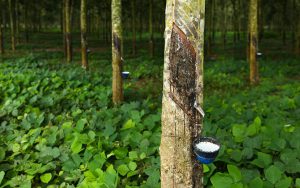Protected cultivation, also known as controlled environment agriculture (CEA) or greenhouse farming, is a modern agricultural technique that involves creating artificial structures to provide optimal crop growth conditions. Specifically, this method utilizes various technologies and environmental controls to shield plants from adverse weather conditions, pests, and diseases while maintaining an ideal microclimate for growth. Moreover, the practice of protected cultivation has gained immense popularity in recent years due to its ability to enhance crop yield, quality, and sustainability. Consequently, protected cultivation plays a vital role in addressing the challenges of food security, resource management, and climate change in the agricultural sector. This article explores the principles, benefits, and applications of protected cultivation, along with its role in shaping the future of agriculture.
Principles of Protected Cultivation
Greenhouse Structures:- Protected cultivation typically involves the use of greenhouse structures made of glass, plastic, or other transparent materials. These structures allow sunlight to enter while trapping heat, creating a warmer and more stable environment for plant growth. The controlled environment within the greenhouse allows farmers to extend growing seasons and cultivate crops.
Environmental Controls:- To optimize plant growth, various environmental factors such as temperature, humidity, light intensity, and carbon dioxide levels are closely monitored and controlled within the greenhouse.
Farmers can strategically fine-tune these parameters by integrating automation and sophisticated technology, ultimately creating the most favorable conditions for various crop varieties. This data-driven approach maximizes crop yields and allows farmers to conserve valuable resources.
Irrigation and Nutrient Management:- In protected cultivation, water and nutrient supply systems are carefully managed to meet the specific requirements of each crop. Drip irrigation, hydroponics, and fertigation systems are commonly used to provide water and essential nutrients to the plant’s roots.
Benefits of Protected Cultivation
Enhanced Crop Yield:- By providing an ideal growing environment, protected cultivation can significantly increase crop yields compared to traditional open-field farming. This boost in productivity is especially crucial to meet the rising demand for food due to global population growth.
Improved Crop Quality:- Controlled conditions in greenhouses promote uniform growth and reduce exposure to external contaminants, resulting in higher-quality crops with consistent size, color, and taste. This benefit is particularly valuable for producing premium fruits, vegetables, and flowers.
Year-Round Production:- Consistently, protected cultivation allows farmers to cultivate crops year-round, independent of seasonal variations and harsh weather conditions. As a result, this continuity in production helps maintain a stable supply of fresh produce. Which ultimately reduces price fluctuations and food shortages.
Water Efficiency:- Precisely, protected cultivation employs efficient irrigation methods to minimize water wastage, ensuring optimal use of this valuable resource. Given the intensifying global water crisis, adopting such water-efficient practices becomes increasingly important.
Pest and Disease Control:- The controlled environment of greenhouses acts as a physical barrier against pests and diseases, reducing the need for chemical pesticides and fungicides. This not only benefits the environment but also enhances food safety for consumers.
Land Utilization:- Protected cultivation enables farming in areas with limited arable land, such as urban or densely populated regions. By maximizing land use efficiency, this method contributes to preserving natural habitats and reducing deforestation.
Applications of Protected Cultivation
Vegetable Production:- Greenhouse cultivation is widely employed for growing popular vegetables like tomatoes, cucumbers, bell peppers, and lettuce. Controlled environments consequently optimize growth, shortening harvest time and improving productivity and crop quality.
Flower Cultivation:- Protected cultivation allows for the year-round production of cut flowers, potted plants, and ornamental flowers. This is especially crucial for the floral industry, where consistent supply and quality are essential.
Fruit Farming:- Many fruit crops, such as strawberries, blueberries, and grapes, thrive in controlled environments. Indeed greenhouses protect delicate fruit varieties from adverse weather and pests, enhancing their quality and market value.
Medicinal and Aromatic Plants:- Specifically, greenhouse cultivation of medicinal and aromatic plants, such as herbs, contributes to maintaining consistent potency and chemical composition. Consistent potency and chemical composition are crucial factors for pharmaceuticals and herbal medicines to guarantee effectiveness and quality.
Research and Development:- Protected cultivation serves as a valuable platform for agricultural research, allowing scientists to conduct experiments on crop growth, disease resistance, and climate adaptation.
The Future of Protected Cultivation
Undoubtedly, protected cultivation will play a pivotal role in shaping the future of agriculture. In light of the continuous growth of the global population, traditional farming methods may struggle to meet the increasing demand for food. Protected cultivation presents a viable solution by optimizing productivity and resource efficiency, thereby contributing to long-term food security. In addition to its current applications, the development of innovative technologies and practices will likely expand its scope further.
Vertical Farming:- Vertical farming, a form of protected cultivation, involves stacking plants in multiple layers to optimize space utilization. This approach is particularly suitable for urban areas, where limited land necessitates innovative farming techniques, and transporting fresh produce over long distances becomes a significant concern.
Climate Resilience:- Protected cultivation can eventually help agriculture adapt to climate change by mitigating the impact of extreme weather events and creating stable growing environments. As unpredictable weather patterns become more frequent, the resilience offered by controlled agriculture becomes increasingly valuable.
Sustainable Practices:- By incorporating renewable energy sources, rainwater harvesting, and smart resource management, collectively, protected cultivation can further enhance its sustainability and significantly minimize its environmental footprint. This holistic approach to resource management ensures a more eco-friendly and efficient agricultural production system.
Conclusion
Notably, protected cultivation symbolizes a paradigm shift in modern agriculture, empowering farmers to overcome the constraints of conventional open-field farming. In this context, creating controlled environments and optimizing resource use pave the way for more sustainable and efficient food production, ensuring long-term food security and environmental sustainability.
With ongoing technological advancements, protected cultivation is poised to play an increasingly significant role in meeting the global demand for food while simultaneously protecting natural resources and preserving the environment. This synergy between technology and sustainable agriculture paves the way for a more prosperous and eco-friendly future.





